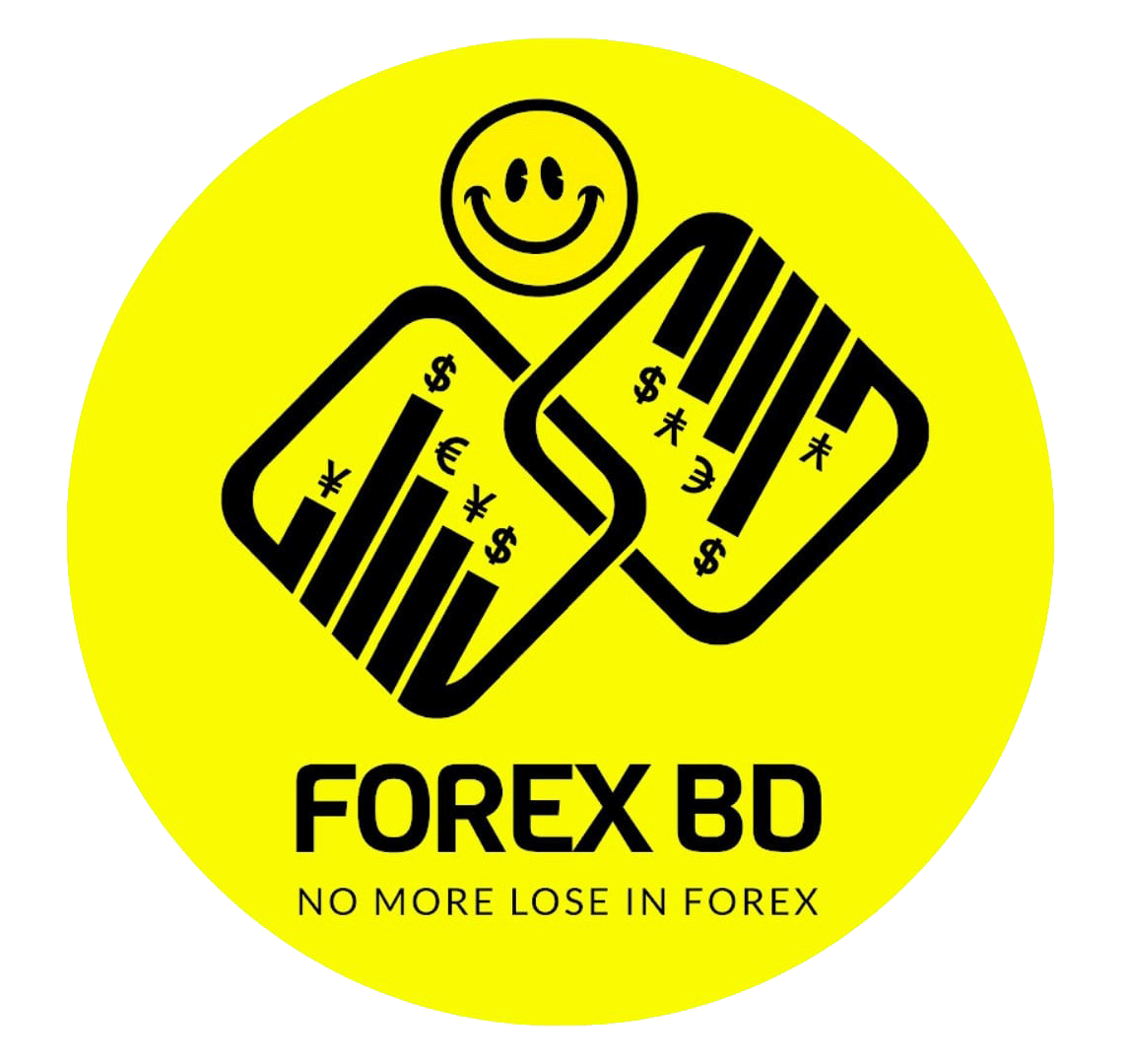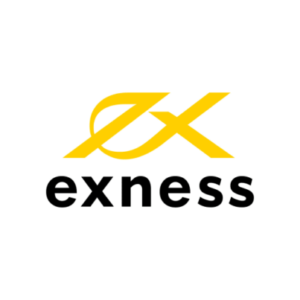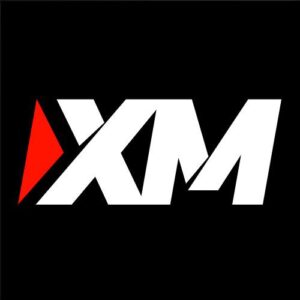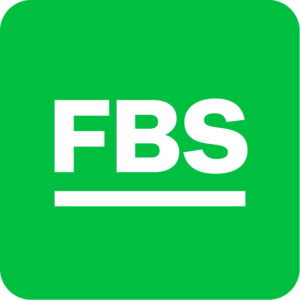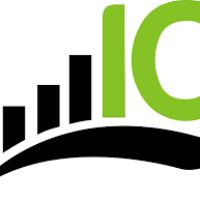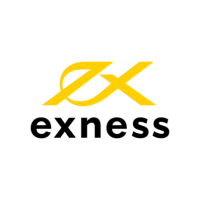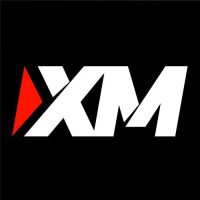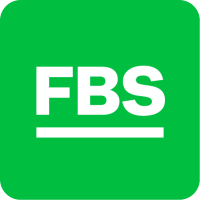
Book Title: “Mastering Advanced Forex Technical Analysis: A Comprehensive Guide to Profitable Trading Strategies”
Book Chapters:
Understanding Technical Analysis in Forex Trading
Getting Started with Forex Technical Analysis: Tools and Techniques
Chart Types and Chart Patterns in Forex Trading
Price Action Trading Strategies for Forex
Forex Indicators and Oscillators: A Complete Guide
Fibonacci Retracement and Extension in Forex Trading
Japanese Candlestick Analysis in Forex Trading
Trading Divergences in Forex: A Unique Perspective
Advanced Trading Strategies using Moving Averages in Forex
Bollinger Bands: Trading Strategies and Tips
Pivot Point Analysis in Forex Trading
Elliot Wave Theory in Forex Trading
Harmonic Trading: A Unique Approach to Forex Technical Analysis
Algorithmic Trading Strategies with Technical Analysis in Forex
Combining Fundamental and Technical Analysis for Consistent Profits
Book Introduction: The Forex market is one of the largest financial markets in the world, with a daily turnover of trillions of dollars. Technical analysis is one of the most widely used methods for predicting market movements and making trading decisions in the Forex market. In this book, we will dive deep into advanced technical analysis techniques that can give traders a significant edge in the highly competitive Forex market.
Whether you are an experienced Forex trader or just starting, this comprehensive guide will help you master advanced technical analysis concepts and trading strategies. We will cover various chart types, chart patterns, price action strategies, Forex indicators and oscillators, Fibonacci retracement and extension, Japanese candlestick analysis, trading divergences, moving averages, Bollinger bands, pivot point analysis, Elliot wave theory, harmonic trading, algorithmic trading, and combining fundamental and technical analysis.
Each chapter of this book is designed to provide detailed and practical information on the specific topic covered, along with real-world examples and trading strategies. By the end of this book, you will have a thorough understanding of advanced technical analysis concepts and will be equipped with the knowledge and skills necessary to make profitable trading decisions in the Forex market.
Chapter 1: Understanding Technical Analysis in Forex Trading Technical analysis is the study of price movements and market trends to predict future price movements. In Forex trading, technical analysis involves analyzing historical price data and using it to make trading decisions. This chapter will provide an overview of technical analysis, its benefits, and limitations, and introduce some of the key concepts and tools used in technical analysis.
We will discuss the difference between technical analysis and fundamental analysis, the importance of charts, and the various chart types used in Forex trading. We will also cover some of the basic tools used in technical analysis, such as support and resistance levels, trend lines, and moving averages. Additionally, we will introduce the concept of indicators and oscillators and their role in technical analysis. By the end of this chapter, you will have a solid understanding of the basics of technical analysis in Forex trading.
Chapter 2: Getting Started with Forex Technical Analysis: Tools and Techniques To get started with technical analysis in Forex trading, you need to have the right tools and techniques. In this chapter, we will cover some of the essential tools and techniques that you will need to use in technical analysis.
We will start by discussing the importance of choosing the right trading platform and charting software. Then, we will cover some of the most commonly used technical analysis tools, such as trend lines, support and resistance levels, and moving averages. We will also introduce some advanced tools and techniques, such as Elliott wave analysis and harmonic trading. By the end of this chapter, you will have a good understanding of the tools and techniques required to perform technical analysis in Forex trading.
Chapter 3: Chart Types and Chart Patterns in Forex Trading
Charts are the backbone of technical analysis in Forex trading. A chart is a visual representation of price movements over a specific period, and it is used to identify trends, support and resistance levels, and other patterns that can be used to make trading decisions. In this chapter, we will discuss the different chart types used in Forex trading and the various chart patterns that traders look for to make profitable trades.
There are several types of charts used in Forex trading, including line charts, bar charts, and candlestick charts. Each chart type has its advantages and disadvantages, and traders often use a combination of these charts to get a complete picture of price movements.
We will also discuss the various chart patterns that traders look for in technical analysis, such as triangles, rectangles, head and shoulders, and double tops and bottoms. These patterns can be used to identify potential trend reversals, breakouts, and other trading opportunities. We will provide examples of these chart patterns and show you how to use them in your trading.
By the end of this chapter, you will have a good understanding of the different chart types used in Forex trading and the various chart patterns that traders look for to make profitable trades.
Chapter 4: Price Action Trading Strategies for Forex
Price action trading is a popular approach to Forex trading that involves analyzing price movements without relying on indicators or other technical analysis tools. Price action traders believe that all the information they need to make profitable trades is contained in the price movements themselves.
In this chapter, we will discuss the key principles of price action trading and show you how to use these principles to develop profitable trading strategies. We will cover topics such as support and resistance levels, trend lines, and chart patterns, and show you how to use them to identify potential trading opportunities.
We will also introduce you to some of the most effective price action trading strategies, such as the pin bar strategy, the inside bar strategy, and the engulfing bar strategy. These strategies can be used to identify potential trend reversals and breakouts and can be highly effective in generating profitable trades.
By the end of this chapter, you will have a good understanding of price action trading and will be able to develop your own profitable trading strategies using these principles.
Chapter 5: Forex Indicators and Oscillators: A Complete Guide
Indicators and oscillators are popular technical analysis tools used in Forex trading. They are used to provide additional information about price movements and can be used to confirm trends, identify potential trend reversals, and generate trading signals.
In this chapter, we will provide a complete guide to Forex indicators and oscillators. We will cover topics such as moving averages, relative strength index (RSI), stochastic oscillator, and the MACD indicator. We will discuss how these indicators work, how to interpret them, and how to use them to make profitable trades.
We will also introduce you to some of the most effective indicator-based trading strategies, such as the moving average crossover strategy and the RSI divergence strategy. These strategies can be highly effective in generating profitable trades and can be used in combination with other technical analysis tools for even better results.
By the end of this chapter, you will have a good understanding of Forex indicators and oscillators and will be able to use them to develop your own profitable trading strategies.
Chapter 6: Fibonacci Retracement and Extension in Forex Trading
Fibonacci retracement and extension are popular technical analysis tools used in Forex trading. They are based on the Fibonacci sequence, a mathematical concept that occurs naturally in many areas of nature, including financial markets.
In this chapter, we will provide a complete guide to Fibonacci retracement and extension in Forex trading. We will explain how to use these tools to identify potential support and resistance levels, trend retracements,
and trend extensions. We will show you how to draw Fibonacci retracement and extension levels on your charts and how to use them to make profitable trades.
We will also introduce you to some of the most effective Fibonacci trading strategies, such as the Fibonacci retracement strategy and the Fibonacci extension strategy. These strategies can be used to identify potential entry and exit points and can be highly effective in generating profitable trades.
By the end of this chapter, you will have a good understanding of Fibonacci retracement and extension and will be able to use them to develop your own profitable trading strategies.
Chapter 7: Trading Psychology: The Key to Successful Forex Trading
Trading psychology is often overlooked by traders, but it is a critical component of successful Forex trading. A trader’s mindset can have a significant impact on their trading performance, and understanding the principles of trading psychology is essential for long-term success in the Forex market.
In this chapter, we will discuss the key principles of trading psychology and show you how to develop a winning mindset for Forex trading. We will cover topics such as discipline, patience, and emotional control, and provide practical tips and strategies for developing these skills.
We will also discuss the common psychological biases that can affect traders, such as fear, greed, and overconfidence. We will show you how to recognize these biases and how to overcome them to become a more successful trader.
By the end of this chapter, you will have a good understanding of trading psychology and will be able to develop the mindset necessary for successful Forex trading.
Chapter 8: Risk Management in Forex Trading
Risk management is a critical component of successful Forex trading. It involves identifying potential risks and implementing strategies to mitigate those risks, such as position sizing, stop-loss orders, and diversification.
In this chapter, we will discuss the key principles of risk management in Forex trading and show you how to implement effective risk management strategies. We will cover topics such as position sizing, stop-loss orders, and diversification, and provide practical tips and strategies for managing risk effectively.
We will also discuss the importance of maintaining a trading journal to track your progress and identify areas for improvement in your risk management strategy.
By the end of this chapter, you will have a good understanding of risk management in Forex trading and will be able to implement effective risk management strategies to protect your trading capital.
Chapter 9: Backtesting and Optimization: Testing Your Trading Strategies
Backtesting and optimization are essential components of developing and testing profitable Forex trading strategies. Backtesting involves testing a trading strategy on historical data to determine its effectiveness, while optimization involves adjusting the strategy’s parameters to maximize its profitability.
In this chapter, we will provide a complete guide to backtesting and optimization in Forex trading. We will cover topics such as the benefits of backtesting, the types of backtesting software available, and how to perform a backtest on your trading strategy.
We will also show you how to optimize your trading strategy using various parameters, such as stop-loss orders, take-profit orders, and position sizing. We will provide practical tips and strategies for optimizing your trading strategy effectively.
By the end of this chapter, you will have a good understanding of backtesting and optimization in Forex trading and will be able to test and optimize your own trading strategies for maximum profitability.
Chapter 10: Building a Trading Plan for Forex Trading Success
A trading plan is a critical component of successful Forex trading. It outlines your trading goals, strategies, and risk management principles, and provides a roadmap for achieving trading success.
In this chapter, we will discuss the key components of a trading plan for Forex trading success. We will cover topics such as goal setting, strategy development, risk management, and trading journaling.
We will also provide practical tips and strategies for building a trading plan that is tailored to your individual trading style and goals.
By the end of this chapter, you will have a good understanding of the key components of a trading plan and will be able to create your own trading plan for Forex trading success.
Chapter 11: Trading Systems: Developing and Testing Your Trading System
A trading system is a set of rules and parameters that dictate when and how to enter and exit trades. Developing and testing a trading system is a critical component of successful Forex trading.
In this chapter, we will discuss the key principles of trading systems and show you how to develop and test your own trading system. We will cover topics such as technical analysis, indicators, and trading rules.
We will also show you how to test your trading system using historical data to determine its effectiveness and profitability. We will provide practical tips and strategies for developing and testing your trading system effectively.
By the end of this chapter, you will have a good understanding of trading systems and will be able to develop and test your own trading system for Forex trading success.
Chapter 12: Forex Trading Strategies: Advanced Techniques for Profitable Trading
In this chapter, we will introduce you to some advanced Forex trading strategies that can be highly effective in generating profitable trades. We will cover topics such as range trading, breakout trading, and momentum trading.
We will also show you how to use advanced trading tools such as price action, order flow, and market sentiment to improve your trading results. We will provide practical tips and strategies for using these advanced techniques effectively.
By the end of this chapter, you will have a good understanding of advanced Forex trading strategies and will be able to implement them in your own trading to generate profitable trades.
Chapter 13: Trading Tools and Resources for Forex Traders
There are a variety of tools and resources available to Forex traders that can help them make better trading decisions and improve their overall trading performance. In this chapter, we will introduce you to some of the most useful trading tools and resources available to Forex traders.
We will cover topics such as trading platforms, charting software, news sources, and trading communities. We will also provide practical tips and strategies for using these tools and resources effectively.
By the end of this chapter, you will have a good understanding of the trading tools and resources available to Forex traders and will be able to use them to improve your own trading performance.
Chapter 14: Trading the News: How to Profit from Economic Events
Economic events such as interest rate decisions, GDP releases, and employment reports can have a significant impact on the Forex market. In this chapter, we will show you how to profit from these economic events by trading the news.
We will cover topics such as how to interpret economic data releases, how to trade the news, and how to manage risk when trading the news. We will provide practical tips and strategies for trading the news effectively.
By the end of this chapter, you will have a good understanding of how to trade the news and will be able to use this knowledge to generate profitable trades during economic events.
Chapter 15: The Future of Forex Trading: Emerging Trends and Technologies
The Forex market is constantly evolving, and new technologies and trends are emerging that are shaping the future of Forex trading. In this final chapter, we will discuss some of the emerging trends and technologies in Forex trading and how they are likely to impact the market in the years to come.
We will cover topics such as artificial intelligence, blockchain technology, and social trading. We will also provide insights into the future of Forex trading and how traders can prepare for these changes.
By the end of this chapter, you will have a good understanding of the emerging trends and technologies in Forex trading and will be able to stay ahead of the curve as the market continues to evolve.
Conclusion:
In this book, we have covered a range of topics related to advance Forex technical analysis, including the basics of technical analysis, charting techniques, indicators, trading psychology, risk management, trading plans, trading systems, advanced trading strategies, trading tools and resources, trading the news, and emerging trends and technologies.
We have provided practical tips, strategies, and examples to help you understand each topic and apply it to your own Forex trading. By the end of this book, you should have a solid foundation in advanced Forex technical analysis and be able to develop your own profitable trading strategies.
Remember, Forex trading is a dynamic and challenging market, and success requires continuous learning, adaptation, and discipline. Always be open to new ideas and strategies, and never stop learning and improving your skills.
We wish you the best of luck in your Forex trading journey and hope that this book has provided you with valuable insights and tools for success.
Happy trading!
Copyright © 2023 Forex BD
Name
Details
Rating
Regulation: CySEC, FCA, DFSA, FSCA, FSA, CMA
Founded: 2008
Founders: Petr Valov, Igor Lychagov
Year Founded : 2008
Deposit Methods: VISA, MasterCard, Neteller, Skrill, WM, PM, Crypto (MORE)
Leverage: 1:30 | 1:500
Regulation: CySEC, FCA, DFSA, FSCA, FSA.
Min. Deposit: 5 US$
Min. Withdraw : 5 US$
HQ: Sydney, Australia
Platforms: MT4, MT5, ctrader, web trading
Found in: January 30, 2007
Deposit Methods: Bank Wire (BankTransfer), VISA, MasterCard, Neteller, Skrill, WM, PM, Crypto
Year Founded : 2010
Cryptocurrencies:
 Yes
YesDeposit Methods: Local Deposit, Bank Wire (BankTransfer), VISA, MasterCard, Neteller, Skrill, WM, PM, Crypto, USDT
Year Founded : 2010
Cryptocurrencies: (5+) Bitcoin, Litecoin, Ethereum
Deposit Methods: Local Deposit, Bank Wire (BankTransfer), VISA, MasterCard, Neteller, Skrill, WM, PM, Crypto, USDT (MORE)
Year Founded : 2009
Cryptocurrencies:



Deposit Methods: Bank Wire (BankTransfer/SWIFT), VISA, MasterCard, Alipay, Bitcoin, Bitcoin Cash, Boleto, Ether/Ethereum, Litecoin, Local Bank Deposits, M-Pesa, Mobile Money, Monero, PerfectMoney, Ripple, WebMoney
Year Founded : 2009
Cryptocurrencies:



Deposit Methods: Local Deposit, Bank Wire (BankTransfer), VISA, MasterCard, Neteller, Skrill, WM, PM, Crypto, USDT
Year Founded : 2009
Cryptocurrencies:



Deposit Methods: Bank Wire (BankTransfer/SWIFT), VISA, MasterCard, Alipay, Bitcoin, Bitcoin Cash, Boleto, Ether/Ethereum, Litecoin, Local Bank Deposits, Mobile Money, PerfectMoney, WebMoney, USDT
Year Founded : 2011
Cryptocurrencies: (25+) Bitcoin, Litecoin, Ethereum
Deposit Methods: Bank Deposit, VISA, awepay, Bitcoin, FasaPay, Local Bank Deposits, Local Bank Transfers, Neteller, paytm, Skrill, UnionPay, USDT
Leverage: 1:20 | 1:500
Regulation: CySEC, FCA, DFSA, FSCA, FSA.
Min. Deposit: 50 US$
Min. Withdraw : 50 US$
HQ: Australia, Cyprus, and the UK.
Platforms: MT4, cTrader, web trading
EAs/Robots: ✅ Yes | News Trading: ✅ Yes | Scalping: ✅ Yes
Cryptocurrencies: 20+) Bitcoin, Litecoin, Ethereum
Deposit Methods: Local Deposit, Bank Wire (BankTransfer), VISA, MasterCard, Neteller, Skrill, Crypto. USDT
Leverage: 1:20 | 1:500
Regulation: CySEC, FCA, DFSA, FSCA, FSA.
Min. Deposit: 100 US$
Min. Withdraw : 100 US$
HQ: Cyprus, the UK, Australia, and the United States.
Platforms: MT4, cTrader, web trading
EAs/Robots: ✅ Yes | News Trading: ✅ Yes | Scalping: ✅ Yes
Cryptocurrencies: 20+) Bitcoin, Litecoin, Ethereum
Deposit Methods: Local Deposit, Bank Wire (BankTransfer), VISA, MasterCard, Neteller, Skrill, Crypto. USDT
Leverage: 1:20 | 1:500
Regulation: CySEC, FCA, DFSA, FSCA, FSA.
Min. Deposit: 50 US$
Min. Withdraw : 50 US$
HQ: Australia, Cyprus, and the UK.
Platforms: MT4, cTrader, web trading
EAs/Robots: ✅ Yes | News Trading: ✅ Yes | Scalping: ✅ Yes
Cryptocurrencies: 20+) Bitcoin, Litecoin, Ethereum
Deposit Methods: Local Deposit, Bank Wire (BankTransfer), VISA, MasterCard, Neteller, Skrill, Crypto. USDT
Year Founded : 2010
Cryptocurrencies:



Deposit Methods: Local Deposit, Bank Wire (BankTransfer), VISA, MasterCard, Neteller, Skrill, WM, PM, Crypto, USDT
A Forex broker is a financial services company that provides traders with access to the foreign exchange market. The primary function of a Forex broker is to facilitate the buying and selling of currencies by acting as an intermediary between the trader and the market ( Forex BD / BD Forex / ForexBD / ForexBDLTD / Forex bd LTD / @forexbd )..
Forex brokers offer traders a variety of services, including trading platforms, market analysis, and educational resources. They also provide access to leverage, which allows traders to control larger positions with a smaller amount of capital.
Forex brokers can operate in different ways, such as market makers, which set their own bid and ask prices and take the opposite side of their clients’ trades, or as agency brokers, which pass their clients’ orders directly to the market without any intervention.
Choosing a reliable and trustworthy Forex broker is important for traders to ensure that they receive fair and transparent pricing, access to a range of financial instruments, and adequate customer support ( Forex BD / BD Forex / ForexBD / ForexBDLTD / Forex bd LTD / @forexbd )..
Forex brokers play an important role in the foreign exchange market by providing liquidity and enabling traders to participate in the market with ease. Forex brokers offer a wide range of services and tools to traders, including:
Trading Platforms: Forex brokers provide traders with access to trading platforms that allow them to place trades, analyze the market, and manage their trading accounts.
Market Analysis: Forex brokers offer traders access to market analysis, including news, research, and economic data. This can help traders make informed decisions about when to enter or exit the market.
Educational Resources: Forex brokers often provide educational resources, such as webinars, videos, and tutorials, to help traders improve their trading skills and knowledge.
Leverage: Forex brokers offer traders access to leverage, which allows traders to control larger positions with a smaller amount of capital. However, it’s important to note that leverage can increase both potential profits and losses.
Customer Support: Forex brokers provide customer support to help traders with any questions or issues they may have ( Forex BD / BD Forex / ForexBD / ForexBDLTD / Forex bd LTD / @forexbd )..
When choosing a Forex broker, traders should consider factors such as the broker’s reputation, regulation, trading conditions, fees and commissions, and customer support. It’s important to choose a broker that is reliable, transparent, and offers competitive pricing and trading conditions.
Forex brokers provide traders with access to various types of trading platforms, each with its own unique features and advantages. Here are some of the most common types of Forex broker platforms:
MetaTrader 4 (MT4): MT4 is one of the most popular Forex trading platforms, used by millions of traders worldwide. It is known for its user-friendly interface, extensive charting tools, and support for automated trading through Expert Advisors (EAs) ( Forex BD / BD Forex / ForexBD / ForexBDLTD / Forex bd LTD / @forexbd )..
MetaTrader 5 (MT5): MT5 is the newer version of MT4 and offers additional features and improvements, such as more advanced charting tools, additional order types, and support for more financial instruments.
cTrader: cTrader is a trading platform that offers advanced charting tools, support for automated trading, and fast order execution. It is known for its user-friendly interface and customization options.
WebTrader: WebTrader is a browser-based trading platform that allows traders to access the market from any device with an internet connection. It is a popular choice for traders who prefer a simple and easy-to-use platform ( Forex BD / BD Forex / ForexBD / ForexBDLTD / Forex bd LTD / @forexbd )..
Mobile Trading Platforms: Forex brokers also offer mobile trading platforms that allow traders to access the market and manage their positions from their smartphones or tablets. These platforms typically offer a range of features, including real-time quotes, charts, and news updates.
When choosing a Forex broker platform, it’s important to consider factors such as ease of use, charting tools, order types, automated trading options, customization options, and compatibility with your trading style and strategy. Ultimately, the best platform for you will depend on your individual needs and preferences as a trader.
Forex brokers can be categorized into different types based on their business model and the services they offer to their clients. Here are some of the most common types of Forex brokers ( Forex BD / BD Forex / ForexBD / ForexBDLTD / Forex bd LTD / @forexbd ). :
Dealing Desk (DD) Brokers: Dealing Desk brokers, also known as market makers, act as counterparties to their clients’ trades. They provide liquidity to the market by taking the opposite side of their clients’ trades, and may also offer fixed spreads, guaranteed stop-loss orders, and other risk management tools.
No Dealing Desk (NDD) Brokers: No Dealing Desk brokers do not act as counterparties to their clients’ trades, but instead route their orders directly to liquidity providers, such as banks, financial institutions, and other brokers. NDD brokers typically offer variable spreads and faster order execution speeds than DD brokers.
Electronic Communication Network (ECN) Brokers: ECN brokers are similar to NDD brokers, but instead of routing orders to a single liquidity provider, they connect their clients to a network of liquidity providers, which compete to offer the best bid and ask prices. ECN brokers typically charge a commission for their services, but offer some of the tightest spreads and fastest order execution speeds in the market.
Straight Through Processing (STP) Brokers: STP brokers are similar to NDD brokers, but instead of routing orders directly to liquidity providers, they use automated systems to execute orders based on pre-defined trading rules. STP brokers may offer variable or fixed spreads, and may charge a commission or markup on their services.
Hybrid Brokers: Hybrid brokers combine elements of different business models, such as acting as both a market maker and an ECN broker, or offering both fixed and variable spreads. Hybrid brokers may offer a range of services and account types to meet the needs of different types of traders.
When choosing a Forex broker, it’s important to consider the broker’s business model and the services they offer, as well as their reputation, regulation, and customer support. The best broker for you will depend on your individual needs and trading style, as well as the trading conditions and fees offered by the broker.
Forex trading is a popular financial activity that involves buying and selling currencies to profit from the fluctuations in exchange rates. As with any financial activity, it is essential to choose a reputable and regulated broker to ensure the safety of your funds and a fair trading environment. In this article, we will discuss some of the top regulated forex broker houses.
Online forex trading payment methods refer to the various payment options available for forex traders to deposit or withdraw funds from their trading accounts. In the world of forex trading, payment methods play a vital role in facilitating smooth transactions, and it is important to choose a secure and reliable payment method that suits your needs.
Like, Share & Subscribe to Our Official Sites
Contact with Us :
Copyright © 2023 Forex BD
Risk Warning: Trading on financial markets carries risks. Contracts for Difference (‘CFDs’) are complex financial products that are traded on margin. Trading CFDs carries a high level of risk since leverage can work both to your advantage and disadvantage. As a result, CFDs may not be suitable for all investors because you may lose all your invested capital. You should not risk more than you are prepared to lose. Before deciding to trade, you need to ensure that you understand the risks involved and take into account your investment objectives and level of experience.
Disclaimer : Forexbd.ltd is not encouraging anyone to do forex/stock trading, as there are investments and financial risks involved. ForexBD channel or videos are educational and informative. Before deciding to invest in the forex market, you should carefully consider your investment objectives, level of experience, and risk appetite.
#ForexTrading #ForexMarket #ForexBroker #ForexSignals #ForexAnalysis #ForexEducation #ForexPlatform #ForexTools #ForexStrategy #ForexTradingTips #ForexInvesting #ForexNews #CurrencyTrading #OnlineTrading #TradingSoftware #TechnicalAnalysis #FundamentalAnalysis #RiskManagement #MarketResearch #TradingCommunity #ForexTradingSignals #ForexTradingSystem #ForexMarketAnalysis #ForexMarketNews #ForexMarketResearch #ForexTradingStrategies #ForexTrader #ForexTradingSoftware #ForexTradingCourse #ForexTradingForBeginners #ForexTradingPlatform #ForexTradingEducation #ForexTradingAcademy #ForexTradingOnline #ForexTradingCommunity #ForexTradingCharts #ForexTradingIndicators #ForexTradingAccount #ForexTradingCoach #ForexTradingRobot
